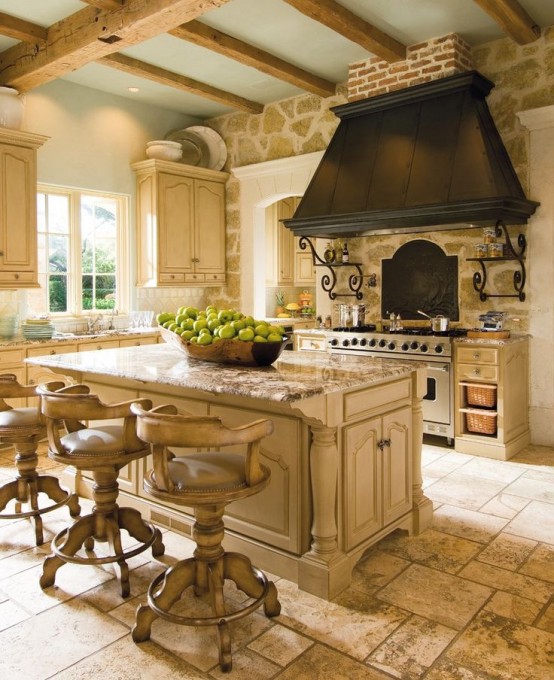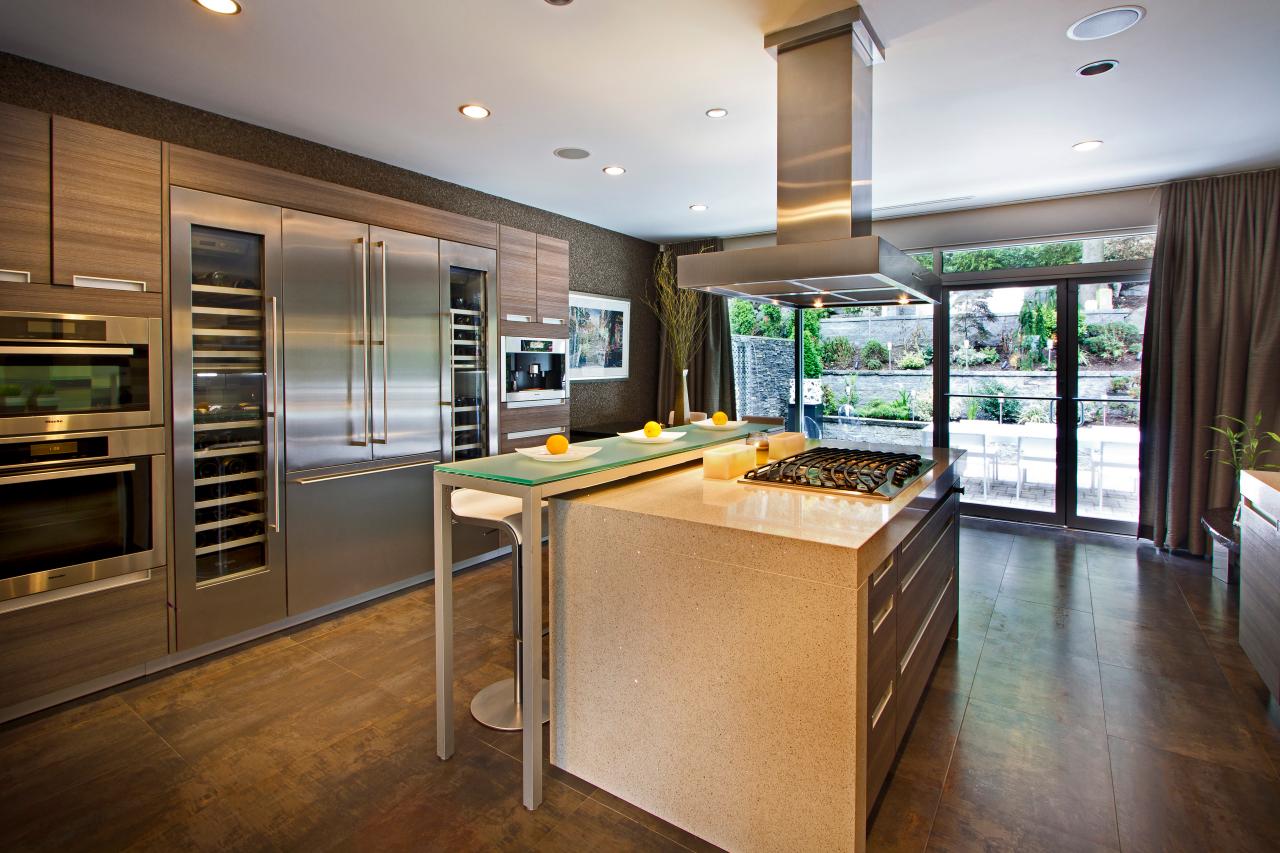Enhancing Functionality and Style in Your Kitchen
A kitchen island with a hood is a popular and practical addition to modern kitchens. It serves as a central hub for cooking, dining, and socializing while also improving ventilation and air quality. This guide will talk about the benefits, design considerations, types of hoods, and installation tips for a kitchen island with a hood. By the end, you’ll have a clear understanding of how to integrate this feature into your kitchen effectively.

Benefits of a Kitchen Island With Hood
A kitchen island with a hood offers several significant advantages, making it a highly desirable feature in contemporary homes. Firstly, it provides excellent ventilation, ensuring that cooking fumes, smoke, and odors are efficiently removed from the kitchen. This helps maintain a fresh and clean environment, preventing lingering smells and improving indoor air quality.
Second, a kitchen island with a hood enhances the aesthetic appeal of your kitchen. It serves as a focal point, adding a touch of sophistication and style. With various designs, materials, and finishes available, you can customize the hood to complement your kitchen’s decor and create a cohesive look.
Third, incorporating a hood over a kitchen island maximizes the functionality of the space. The island can be used for various purposes, such as food preparation, cooking, dining, and entertaining. The hood ensures that the cooking area is well-ventilated, making it more comfortable and enjoyable to use.
Last, a kitchen island with a hood can increase the overall value of your home. It is a highly sought-after feature among potential buyers, as it signifies a well-designed and modern kitchen. Investing in a quality hood and island setup can yield a good return on investment should you decide to sell your property in the future.

Design Considerations for a Kitchen Island With Hood
When planning a kitchen island with a hood, several design considerations must be considered to ensure functionality and aesthetic harmony. One of the primary considerations is the size and layout of your kitchen. The island should be proportionate to the available space, allowing for adequate movement and accessibility.
Another critical aspect is the placement of the hood. The hood should be centered above the cooking area on the island to effectively capture and ventilate cooking fumes. Additionally, the hood should be installed at the correct height to ensure optimal performance. Typically, the recommended distance between the cooktop and the hood is 24 to 30 inches for electric ranges and 30 to 36 inches for gas ranges.
The style and design of the hood are also crucial factors. Hoods come in various styles, such as canopy, chimney, and downdraft, each offering unique benefits. The material and finish of the hood should complement the kitchen’s overall design. Stainless steel is a popular choice for its durability and modern look, but other materials like glass, copper, and custom finishes are also available.
Lighting is another essential consideration. Many hoods come with integrated lighting, which can illuminate the cooking area and enhance visibility. Proper lighting is vital for safety and convenience, allowing you to see clearly while preparing meals. Consider choosing a hood with adjustable lighting to suit different tasks and moods.

Types of Hoods for Kitchen Islands
There are several types of hoods available for kitchen islands, each with distinct features and advantages. The most common types are canopy hoods, chimney hoods, and downdraft hoods.
Canopy hoods are a popular choice for kitchen islands due to their effectiveness and stylish appearance. They are mounted on the ceiling above the island and feature a wide, flat surface that captures cooking fumes and directs them into the ventilation system. Canopy hoods are available in various designs, from sleek and modern to more traditional styles, allowing you to choose one that matches your kitchen decor.
Chimney hoods, also known as island chimneys, are another excellent option. These hoods have a vertical chimney-like structure that extends from the island to the ceiling. They are highly effective at ventilating cooking fumes and adding a dramatic focal point to the kitchen. Chimney hoods are often made from stainless steel and can include additional features like adjustable fan speeds and integrated lighting.
Downdraft hoods are a less conventional choice but can be highly effective in certain kitchen layouts. Instead of being mounted above the cooktop, downdraft hoods are installed flush with the countertop. They rise from the surface when needed and draw cooking fumes downward and away from the cooking area. Downdraft hoods are ideal for kitchens with limited ceiling space or where a more streamlined look is desired.
Each type of hood has its benefits and potential drawbacks, so it’s essential to consider your specific needs, kitchen layout, and design preferences when choosing the right hood for your kitchen island.
Installation Tips for a Kitchen Island With Hood
Proper installation of a kitchen island with a hood is crucial for optimal performance and safety. The first step is to ensure that the kitchen’s electrical and ventilation systems can support the hood. This may involve consulting with a professional to assess the existing infrastructure and make any necessary upgrades.
Next, determine the exact placement of the hood. As mentioned earlier, the hood should be centered above the cooking area and installed at the appropriate height. Use a measuring tape to mark the desired location on the ceiling, ensuring that it aligns with the cooktop on the island.
It’s important to follow the manufacturer’s instructions during installation. These guidelines will provide specific details on mounting brackets, electrical connections, and ventilation requirements. Ensure that all components are securely fastened and that the hood is level for optimal performance.
Ventilation is a critical aspect of hood installation. The hood should be connected to an external vent that directs cooking fumes outside the home. This requires installing ductwork from the hood to an exterior wall or roof vent. If external venting is not possible, consider a hood with a recirculating option, which uses filters to clean the air before recirculating it back into the kitchen.
Last, test the hood to ensure it functions correctly. Turn on the fan and check for adequate airflow and noise levels. Make any necessary adjustments to the fan speed and lighting to suit your preferences. Regular maintenance, such as cleaning the filters and inspecting the ductwork, will help keep the hood operating efficiently.

Common Mistakes to Avoid
Incorrect Hood Placement: One common mistake is installing the hood too high or too low above the cooktop. This can reduce its effectiveness in capturing cooking fumes. Follow the manufacturer’s recommended height for optimal performance.
Inadequate Ventilation: Failing to properly vent the hood to the exterior can lead to poor air quality and lingering odors. Ensure that the ductwork is correctly installed and that there are no obstructions.
Choosing the Wrong Size Hood: Selecting a hood that is too small for the cooktop can result in inadequate ventilation. The hood should be at least as wide as the cooking surface to effectively capture fumes and smoke.
Ignoring Aesthetic Harmony: While functionality is crucial, it’s also important to consider the hood’s design and how it fits with the overall kitchen decor. An ill-matched hood can disrupt the kitchen’s visual appeal.

Why is a kitchen island with a hood beneficial?
A kitchen island with a hood provides excellent ventilation, helping to remove cooking fumes, smoke, and odors from the kitchen. It also serves as a central focal point, enhancing the kitchen’s aesthetic appeal and increasing functionality by creating a versatile space for cooking, dining, and socializing.
What is the ideal height for installing a hood above a kitchen island?
The ideal height for installing a hood above a kitchen island depends on the type of cooktop. For electric ranges, the recommended distance is 24 to 30 inches, while for gas ranges, it is 30 to 36 inches. This ensures optimal ventilation and effective capture of cooking fumes.
How do I choose the right type of hood for my kitchen island?
Choosing the right type of hood depends on your kitchen’s layout, design preferences, and ventilation needs. Canopy hoods are stylish and effective, chimney hoods add a dramatic focal point, and downdraft hoods are ideal for kitchens with limited ceiling space or where a streamlined look is desired. Consider your specific requirements and consult with a professional if needed.
Can I install a kitchen island hood myself, or should I hire a professional?
While some homeowners may have the skills to install a kitchen island hood, it is generally recommended to hire a professional. Proper installation involves ensuring correct electrical and ventilation connections, which can be complex. A professional can ensure that the hood is installed safely and functions optimally.
How do I maintain my kitchen island hood?
Regular maintenance is essential for keeping your kitchen island hood in good working condition. Clean the filters regularly to remove grease and debris, inspect the ductwork for obstructions, and check that all components are functioning correctly. Following the manufacturer’s maintenance guidelines will help extend the life of your hood and maintain its performance.

Pendant lights over island on Pinterest Stove hoods, Hoods and Islands

Cool Vent Hoods To Accentuate Your Kitchen Design

Types of Kitchen Range Hoods to Transform Your Kitchen

Contemporary Kitchen With Stainless Hood Above Island

Kitchen extractor, Kitchen island hood ideas

Related Posts:
- House Plans With Large Kitchen Island
- Flush Mount Kitchen Island Lights
- Pottery Barn Play Kitchen Island
- Knotty Alder Kitchen Island
- How To Remodel A Kitchen Island
- DIY Kitchen Island From Stock Cabinets
- Cost Of Kitchen Island With Sink And Dishwasher
- Kitchen Island Top Replacement
- Zinc Kitchen Island
- Tall Kitchen Island Cart
